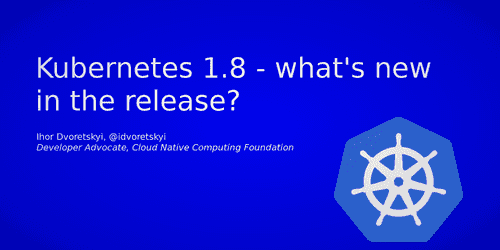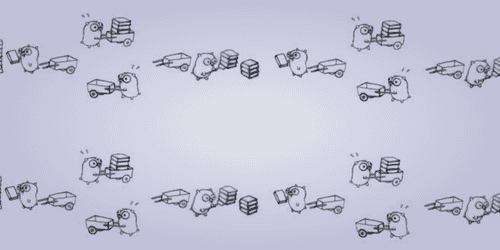IT Network
An IT network is a group of interconnected electronic systems.
To share information between systems, the OSI model defines and standardizes the communication functionalities and their interactions. The standard defines a model composed of 7 layers :
- Physical(1): The physical layer is the lowest layer. This layer manages the physical connections, maintains them and transmitting bits over them.
- Data Link(2): The task of the data link layer is to ensure reliable transmission of the data and to control access to the transmission medium. The data link layer is divided into two sub-layers: LLC (Logical Link Control, layer 2b) that handle the routing for the IP or IPX protocol and the MAC (Media Access Control, layer 2a) that handle the routing for the physical systems with their MAC address.
- Network(3): The network layer is responsible for transmitting the data packets to the destination. Data transmission takes place across the entire communications network and includes routing between the network nodes. If a direct connection to the destination is not possible, the packets must be forwarded by nodes located along the way.
- Transport(4): The tasks of the transport layer are the segmentation of the data stream, congestion avoidance and ensuring error-free transmission. The data is segmented into chunks called frames and the address (port) of the target service is added. Additional metadata is added for verification and control of the frames. The transport layer provides uniform access to the application-oriented layers 5 to 7, so that they do not need to consider the properties of the communication network.
- Session(5): The session layer is responsible for process communication between two systems. This layer open, close and manage instances of communication channels called sessions. This layer provides authentication, authorization and session restoration services.
- Presentation(6): The presentation layer ensures that data sent by the application layer of one system can be read by the application layer of another system. If necessary, the presentation layer acts as a translator between different data formats by using a data format that both systems can understand, like the ASN.1 (Abstract Syntax Notation One). This layer also provides data compression and encryption services.
- Application(7): The application layer manage services, applications and their access to the network. It allows applications to connect to the lower layers. The applications themselves do not belong to the layer.
- Learn more
- Official website
- Related tags
- DNS
Related articles

OS module on steroids with the SIGAR Node binding
Categories: Node.js | Tags: C++, CPU, File system, Metrics, Monitoring, Network
Today we are announcing the first release of the Node binding to the SIGAR library. Visit the project website or the source code repository on GitHub. SIGAR is a cross platform interface for gathering…
By David WORMS
Jan 11, 2012

Virtual machines with static IP for your Hadoop development cluster
Categories: Infrastructure | Tags: Ambari, Hortonworks, Red Hat, VirtualBox, VM, VMware, Cloudera, Network
While I am about to install and test Ambari, this article is the occasion to illustrate how I set up my development environment with multiple virtual machines. Ambari, the deployment and monitoring…
By David WORMS
Feb 27, 2013

Hadoop development cluster of virtual machines with static IP using VirtualBox
Categories: Infrastructure | Tags: Ambari, Hortonworks, Red Hat, VirtualBox, VM, VMware, Cloudera, Network
A few days ago, I explained how to set up a cluster of virtual machine with static IPsand Internet access suitable to host your Hadoop cluster locally for development. At the time I made use of VMWare…
By David WORMS
Mar 14, 2013

Oracle to Apache Hive with the Oracle SQL Connector
Categories: Business Intelligence | Tags: Oracle, HDFS, Hive, Network
In a previous article published last week, I introduced the choices available to connect Oracle and Hadoop. In a follow up article, I covered the Oracle SQL Connector, its installation and integration…
By David WORMS
May 27, 2013

Network Namespace without Docker
Categories: Hack | Tags: DNS, Linux, Namespaces, VLAN, Docker, Network
Let’s imagine the following use case: I am connected to several networks (wlan0, eth0, usb0). I want to choose which network I’m gonna use when I launch apps. My app doesn’t allow me to choose a…
Jul 6, 2016

Exposing Kafka on two different networks
Categories: Infrastructure | Tags: Cyber Security, VLAN, Kafka, Cloudera, CDH, Network
A Big Data setup usually requires you to have multiple networking interface, let’s see how to set up Kafka on more than one of them. Kafka is a open-source stream processing software platform system…
Jul 22, 2017

Kubernetes 1.8
Categories: Containers Orchestration, Open Source Summit Europe 2017 | Tags: containerd, CRD, RBAC, Kubernetes, Network, OCI, Release and features
The 1.8 release of Kubernetes brings a lot of new things. With 2500+ pull request, 2000+ commits, 400+ commiters, Kubernetes added 39 new features in this version. This is the richest release in terms…
Oct 24, 2017

Scaling massive, real-time data pipelines with Go
Categories: Open Source Summit Europe 2017, Learning | Tags: Algorithm, Data structures, Go Lang, Pipeline, Protocols, Network
Last week at the Open Source Summit in Prague, Jean de Klerk held a talk called Scaling massive, real-time data pipelines with Go. This article goes over the main points of the talk, detailing the…
Nov 21, 2017

Multihoming on Hadoop
Categories: Infrastructure | Tags: Hadoop, HDFS, Kerberos, Network
Multihoming, which means having multiple networks attached to one node, is one of the main components to manage the heterogeneous network usage of an Apache Hadoop cluster. This article is an…
Mar 5, 2019

Kerberos and Spnego authentication on Windows with Firefox
Categories: Cyber Security | Tags: Firefox, HTTP, FreeIPA, Kerberos
In Greek mythology, Kerberos, also called Cerberus, guards the gates of the Underworld to prevent the dead from leaving. He is commonly described as a three-headed dog, a serpent’s tail, mane of…
By David WORMS
Nov 4, 2019

Bridging the DBnomics Swagger/OpenAPI schema with GraphQL
Categories: DevOps & SRE, Front End | Tags: Data Engineering, JAMstack, GraphQL, JavaScript, Node.js, REST, Schema
While redacting a long and fastidious document today, I came across DBnomics, an open platform federating economic datasets. Browsing its website and APIs, I found their OpenAPI schema (aka Swagger…
By David WORMS
Apr 8, 2021

Traefik, Docker and dnsmasq to simplify container networking
Categories: Containers Orchestration, Infrastructure, Tech Radar | Tags: DNS, Gatsby, JAMstack, Linux, Docker, Network
Good tech adventures start with some frustration, a need, or a requirement. This is the story of how I simplified the management and access of my local web applications with the help of Traefik and…
By David WORMS
Nov 17, 2022